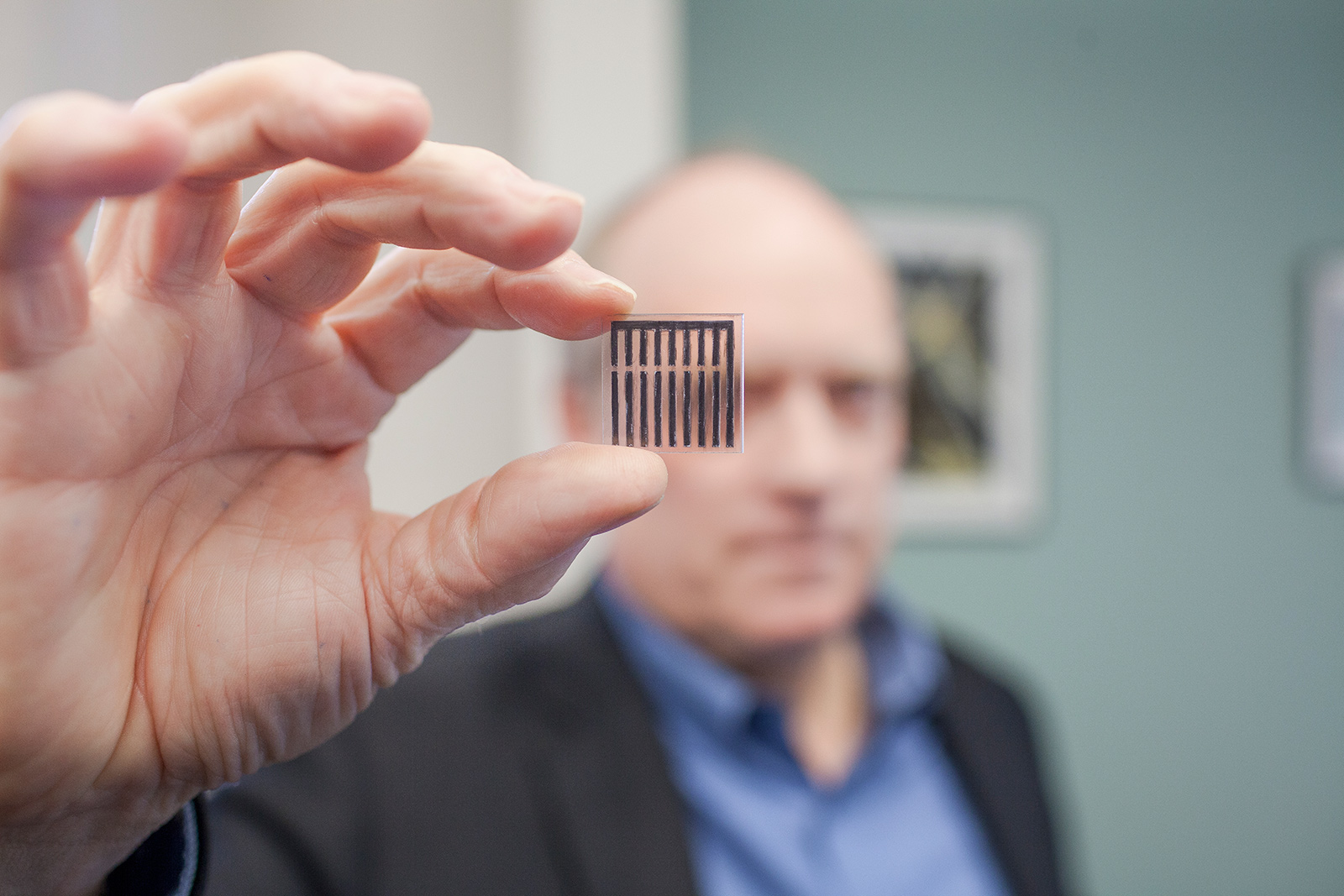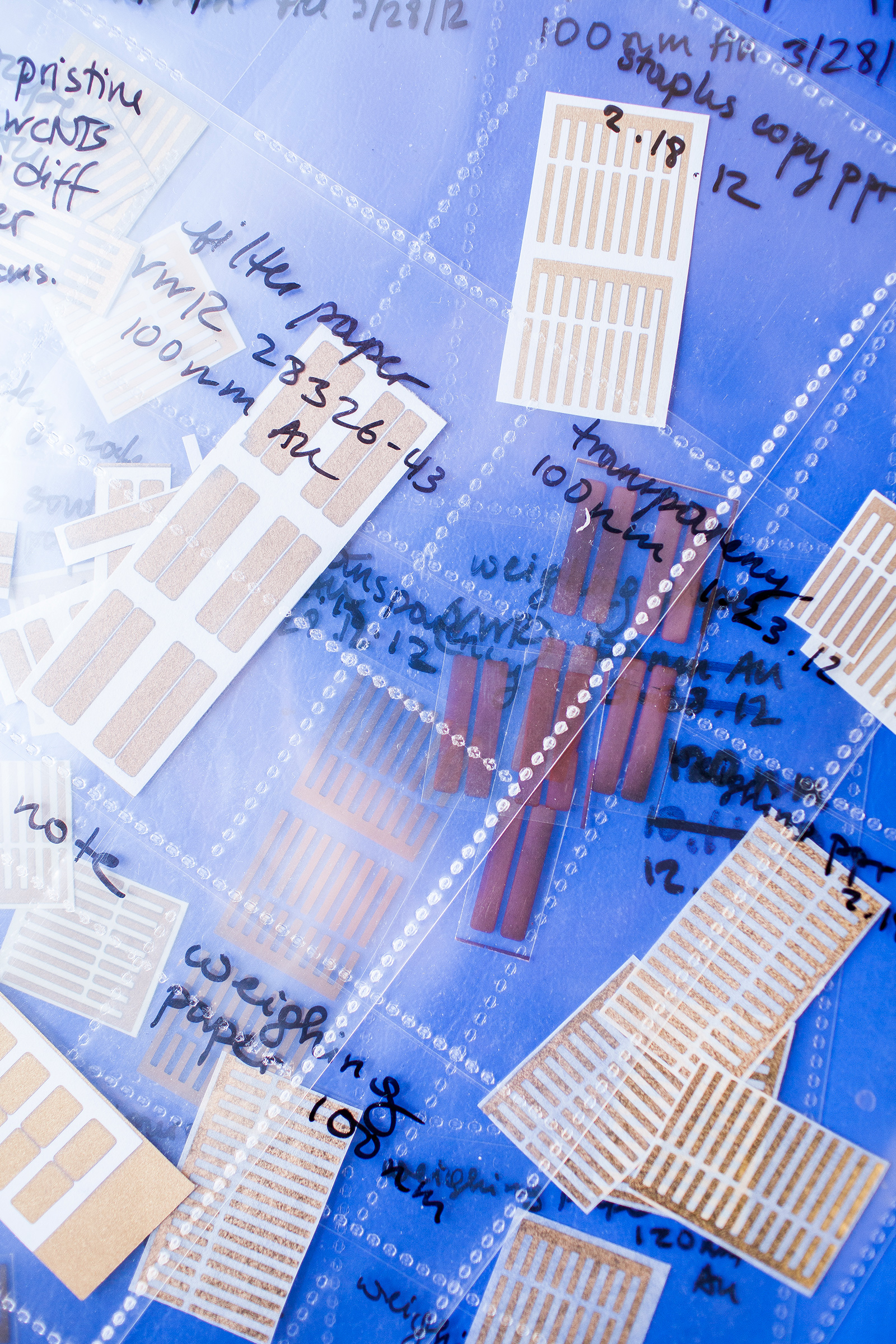
The sensors’ smarts come from Tim Swager’s combined use of carbon nanotube-based circuitry and radio frequency identification (RFID) tagging technology.
PHOTO: BEN BOCKO
But he also sees the potential for the technology to be used in a civilian application: smart food packaging.
Swager, John D. MacArthur Professor of Chemistry at MIT, has altered the chemistry in the sensors so that they can detect rotting meat and fruit ripeness. “What I would really like to make is a sensor that can be used in a grocery store to tell if a tomato tastes good,” he says.
As part of smart packaging, the business card-sized sensors can be embedded in meat crates being shipped to a grocer. Upon arrival, a worker can scan the shipment with the press of a button to get an instant readout of which crates have questionable contents. “It’s a lot like a passive transponder in your car, which can be powered and read when you drive through the tollbooth,” says Swager.

The sensors’ smarts come from Swager’s combined use of carbon nanotube-based circuitry and radio frequency identification (RFID) tagging technology. When the sensor receives a pulse of power from a remote scanner, electricity flows through the carbon-nanotube circuits. If the target chemical is present, it will either enhance or slow the electron flow and cause a measurable change in electrical resistance. That signal plus the sensor’s RFID tag allow the grocer to quickly locate and cull bad pieces of meat.
Swager sees a range of other potential applications, such as installing fruit ripeness sensors in greenhouses to allow farmers to precisely time harvests and embedding sensors that detect explosives and other harmful agents in public transportation passcards to improve public safety.